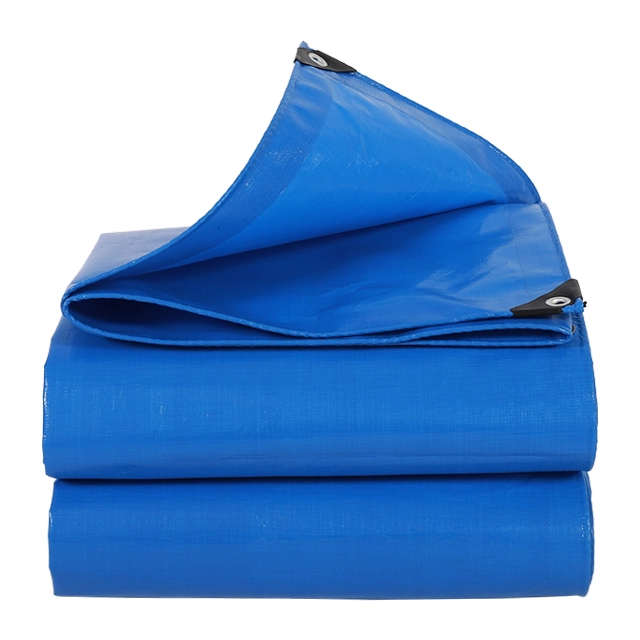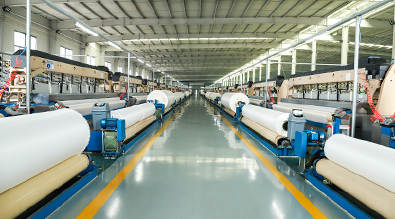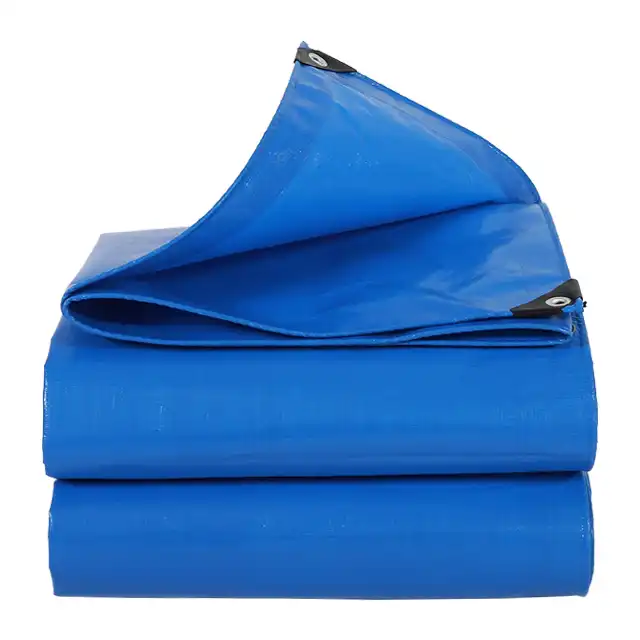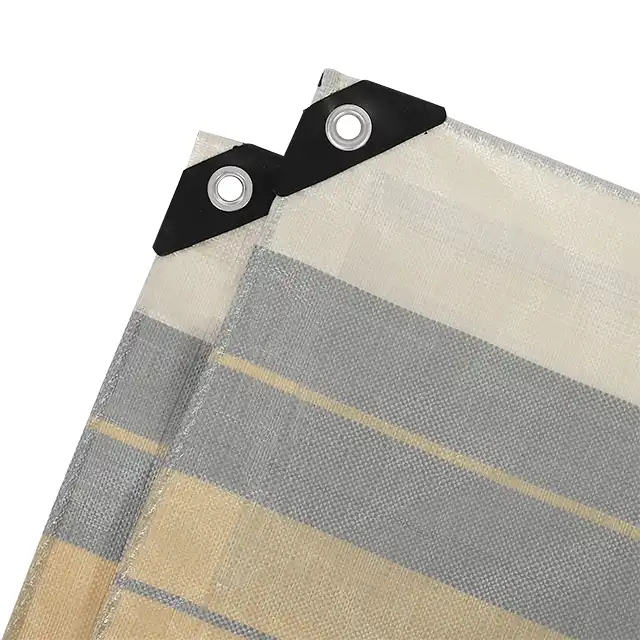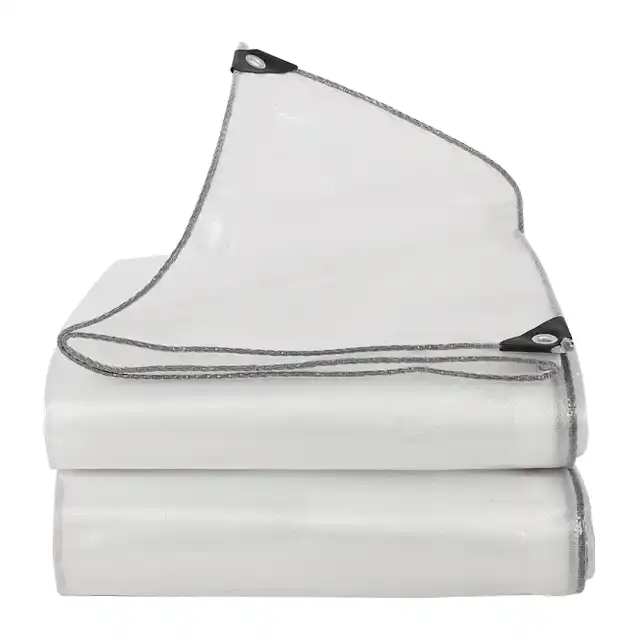5 Benefits of Using PE Tarpaulin for Industrial Applications
In the industrial sector, finding cost-effective, versatile, and reliable materials for protection and containment is crucial for operational efficiency. PE tarpaulin (polyethylene tarpaulin) has emerged as an indispensable material across various industrial applications due to its exceptional combination of durability, flexibility, and protective capabilities. Whether you're looking to safeguard expensive equipment, create temporary storage solutions, or protect construction sites from harsh weather conditions, PE tarpaulin offers unmatched performance characteristics that make it the preferred choice for professionals across numerous industries. This article explores the five key benefits that make PE tarpaulin an essential material for industrial applications, highlighting why industry leaders consistently choose this versatile solution to meet their challenging operational needs.
Superior Weather Resistance and Waterproofing
 One of the primary advantages of PE tarpaulin in industrial settings is its exceptional weather resistance and waterproofing capabilities. Modern PE tarps, especially those manufactured with advanced techniques like those employed by Linyi Shengde Plastic Co., are constructed using high-density polyethylene (HDPE) woven fabric with low-density polyethylene (LDPE) coating on both sides. This combination creates a 100% waterproof barrier that effectively shields equipment, materials, and workspaces from rain, snow, and moisture. The laminated structure prevents water from seeping through, making PE tarpaulin ideal for covering outdoor storage areas, protecting construction materials, and creating weather-resistant enclosures.
One of the primary advantages of PE tarpaulin in industrial settings is its exceptional weather resistance and waterproofing capabilities. Modern PE tarps, especially those manufactured with advanced techniques like those employed by Linyi Shengde Plastic Co., are constructed using high-density polyethylene (HDPE) woven fabric with low-density polyethylene (LDPE) coating on both sides. This combination creates a 100% waterproof barrier that effectively shields equipment, materials, and workspaces from rain, snow, and moisture. The laminated structure prevents water from seeping through, making PE tarpaulin ideal for covering outdoor storage areas, protecting construction materials, and creating weather-resistant enclosures.
The waterproofing effectiveness of PE tarpaulin is particularly valuable in industries where exposure to moisture can lead to significant damage or financial loss. For example, in construction sites, PE tarps protect building materials from rain damage, while in transportation, they shield cargo from moisture during transit. The advanced manufacturing process used to create products like SENDOW TARPAULIN ensures that the waterproofing is consistent across the entire surface, with reinforced edges that prevent water from penetrating even at the seams. With weights ranging from 65gsm to 280gsm and thicknesses between 7-12 mil, these tarps can be selected according to the specific waterproofing requirements of different industrial applications.
Exceptional Durability and Tear Resistance
Industrial environments often subject materials to extreme conditions and stresses, making durability a critical requirement for any protective covering. PE tarpaulin excels in this area, offering remarkable tear resistance and longevity even under challenging circumstances. The manufacturing process begins with high-strength yarn that is woven into a tight fabric mesh (with mesh counts typically ranging from 10x10 to 14x14), creating a foundation that resists punctures and tears. This fabric is then coated with polyethylene, further enhancing its structural integrity and resistance to damage.
The durability of PE tarpaulin is particularly evident in its ability to withstand tensile forces without tearing or stretching out of shape. This makes it suitable for applications where the material may be subject to wind stress, such as truck covers or outdoor containment systems. The anti-corrosion properties of PE tarps also contribute to their durability, allowing them to maintain structural integrity even when exposed to industrial chemicals or pollutants. Linyi Shengde Plastic Co.'s middle-duty PE tarpaulin, with weights between 100gsm-180gsm, strikes an optimal balance between durability and handling ease, making it suitable for most industrial applications where long-term performance is required.
UV Resistance and Weather Stability
Exposure to ultraviolet radiation from sunlight can rapidly degrade many materials, leading to fading, brittleness, and eventual failure. For industrial applications where materials are often used outdoors for extended periods, UV resistance becomes a crucial attribute. PE tarpaulin from quality manufacturers like Linyi Shengde Plastic incorporates specialized UV treatments (ranging from 1%-7% protection factors) that significantly extend the material's lifespan when exposed to direct sunlight. This UV protection prevents the degradation of the polyethylene structure and helps maintain the tarp's physical properties over time.
The weather stability of PE tarpaulin extends beyond just UV resistance to include remarkable temperature tolerance. These tarps exhibit what manufacturers often call "Arctic Flexibility," maintaining their flexibility and functionality even in extremely cold conditions without becoming brittle or cracking. Similarly, they can withstand high temperatures without melting or deforming. This temperature stability makes PE tarpaulin suitable for use across diverse climatic conditions, from the freezing environments of northern industrial facilities to the heat of equatorial construction sites. For industries that operate year-round in varying weather conditions, the ability to use a single material solution regardless of season represents a significant operational advantage and cost savings.
Versatility in Application and Customization
Perhaps one of the most compelling benefits of PE tarpaulin for industrial applications is its remarkable versatility. The material can be manufactured in various weights, sizes, colors, and specifications to meet the unique requirements of different industrial sectors. Linyi Shengde Plastic Co., with its advanced manufacturing capabilities including 4.25m and 4.4m width machines, can produce tarps with widths up to 5.1 meters without joints, allowing for seamless coverage of large areas. This versatility makes PE tarpaulin suitable for applications ranging from truck covers and goods protection to greenhouse fabrics and aquaculture impermeable tarps.
The customization possibilities extend beyond just dimensions to include specialized features tailored to specific industrial needs. For instance, PE tarps can be manufactured with varying levels of transparency or opacity, fire-retardant properties, anti-static treatments, or enhanced tear resistance for particularly demanding applications. They can also be produced in custom colors for branding purposes or to meet safety requirements. With capabilities for custom printing, companies like Linyi Shengde Plastic can incorporate logos, instructions, or warning information directly onto the tarpaulin surface. This adaptability allows industrial users to specify exactly the right tarpaulin solution for their particular application, rather than compromising with a one-size-fits-all approach.
Cost-Effectiveness and Economic Efficiency
In industrial operations, material costs can significantly impact project budgets and overall profitability. PE tarpaulin offers exceptional value due to its combination of relatively low cost, long service life, and minimal maintenance requirements. Compared to alternative protective materials such as specialized fabrics or rigid covers, PE tarpaulin provides comparable or superior protection at a fraction of the cost. The economics become even more favorable when considering the material's durability, which extends its service life and reduces replacement frequency.
The manufacturing efficiencies achieved by established producers like Linyi Shengde Plastic Co., with their advanced production lines capable of 100+ tons daily output, contribute to competitive pricing while maintaining high quality standards. The company's vertical integration, with in-house capabilities for yarn extruding, fabric weaving, coating, and finished product processing, eliminates intermediary costs and ensures quality control at every stage. For industrial users, this translates to reliable access to high-performance tarpaulin products at reasonable prices.
Beyond the direct material costs, PE tarpaulin contributes to economic efficiency through its lightweight nature, which reduces transportation and handling costs compared to heavier alternatives. The material's flexibility also minimizes storage space requirements when not in use. For temporary industrial applications, the reusability of PE tarpaulin further enhances its economic value, allowing companies to amortize the initial investment across multiple projects or uses.
Conclusion
PE tarpaulin stands as an indispensable material in industrial settings, offering a powerful combination of waterproofing, durability, UV resistance, versatility, and cost-effectiveness. These five benefits make it the preferred choice for industries ranging from construction and transportation to agriculture and manufacturing. As industrial challenges evolve, the adaptability and reliability of PE tarpaulin continue to provide effective solutions for protection, containment, and coverage requirements.
For industrial applications demanding the highest quality PE tarpaulin solutions, partnering with an experienced manufacturer makes all the difference. Linyi Shengde Plastic Co., Ltd., with its 20+ years of industry expertise, state-of-the-art manufacturing facilities, and commitment to quality excellence, offers unmatched PE tarpaulin products tailored to specific industrial needs. Our reputation for reliability, combined with our innovative R&D capabilities, ensures that your industrial challenges will be met with effective, customized solutions. Ready to enhance your industrial operations with premium PE tarpaulin? Contact us today at info@shengdetarp.com to discuss your specific requirements.
References
1. Johnson, M.T. (2023). "Advanced Materials in Industrial Applications: The Rise of Polyethylene Products." Industrial Engineering Journal, 45(3), 112-128.
2. Zhang, L. & Williams, K. (2024). "Comparative Analysis of Protective Coverings in Construction: A Five-Year Study." Building Materials Research Quarterly, 17(1), 45-59.
3. Rodriguez, S. (2022). "Weather Resistance Properties of Modern Tarpaulin Materials." Journal of Applied Polymer Science, 89(4), 321-335.
4. Patel, N. & Thompson, H. (2023). "Cost-Benefit Analysis of Protective Materials in Logistics and Transportation." International Journal of Supply Chain Management, 12(2), 78-92.
5. Chen, Y. (2024). "UV Stabilization Techniques for Outdoor Polymeric Materials." Polymer Degradation and Stability, 156, 109-124.
6. Smith, R.L. & Davis, J.K. (2023). "Environmental Performance of Polyethylene Products in Industrial Settings: Lifecycle Assessment." Journal of Cleaner Production, 310, 127-140.
